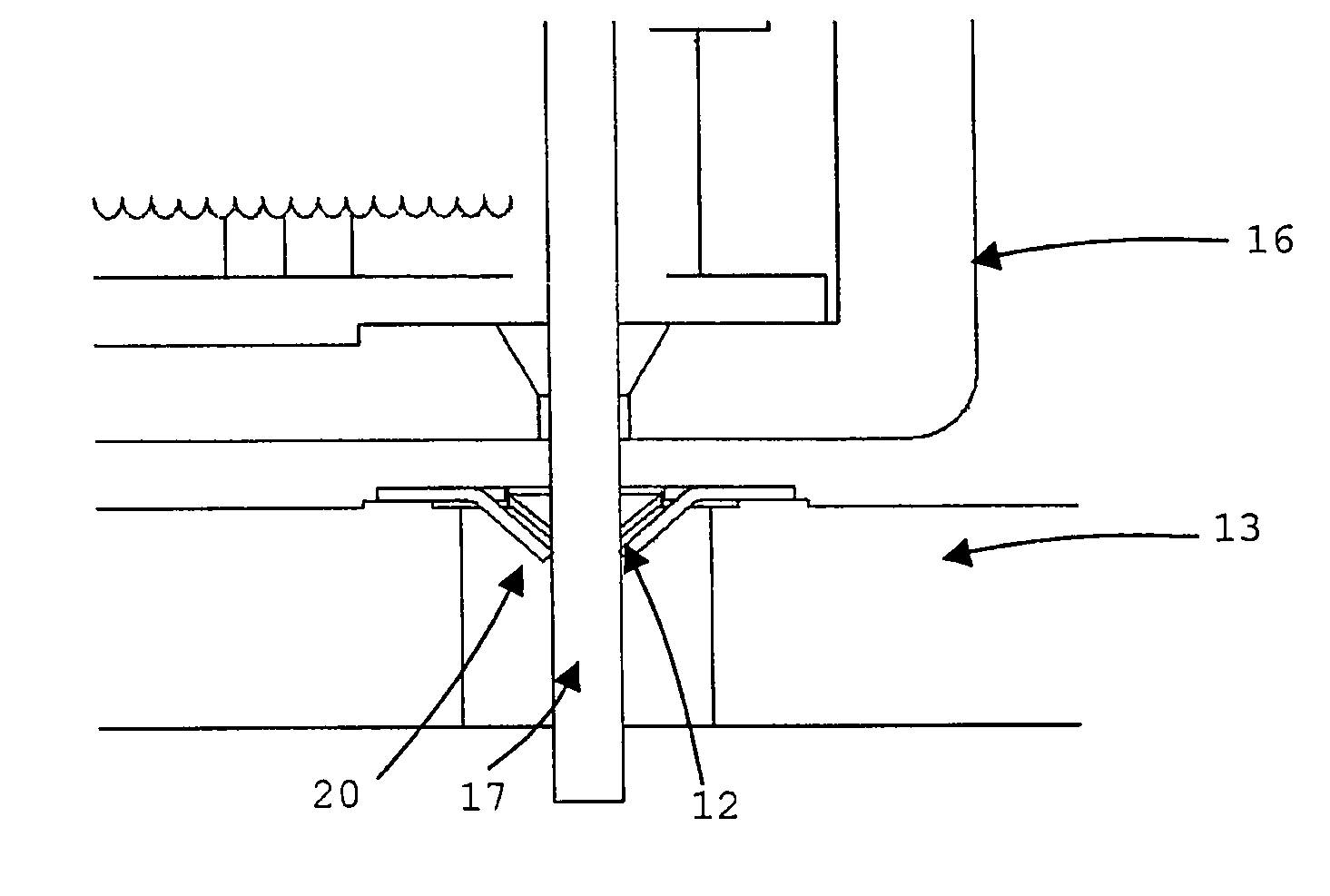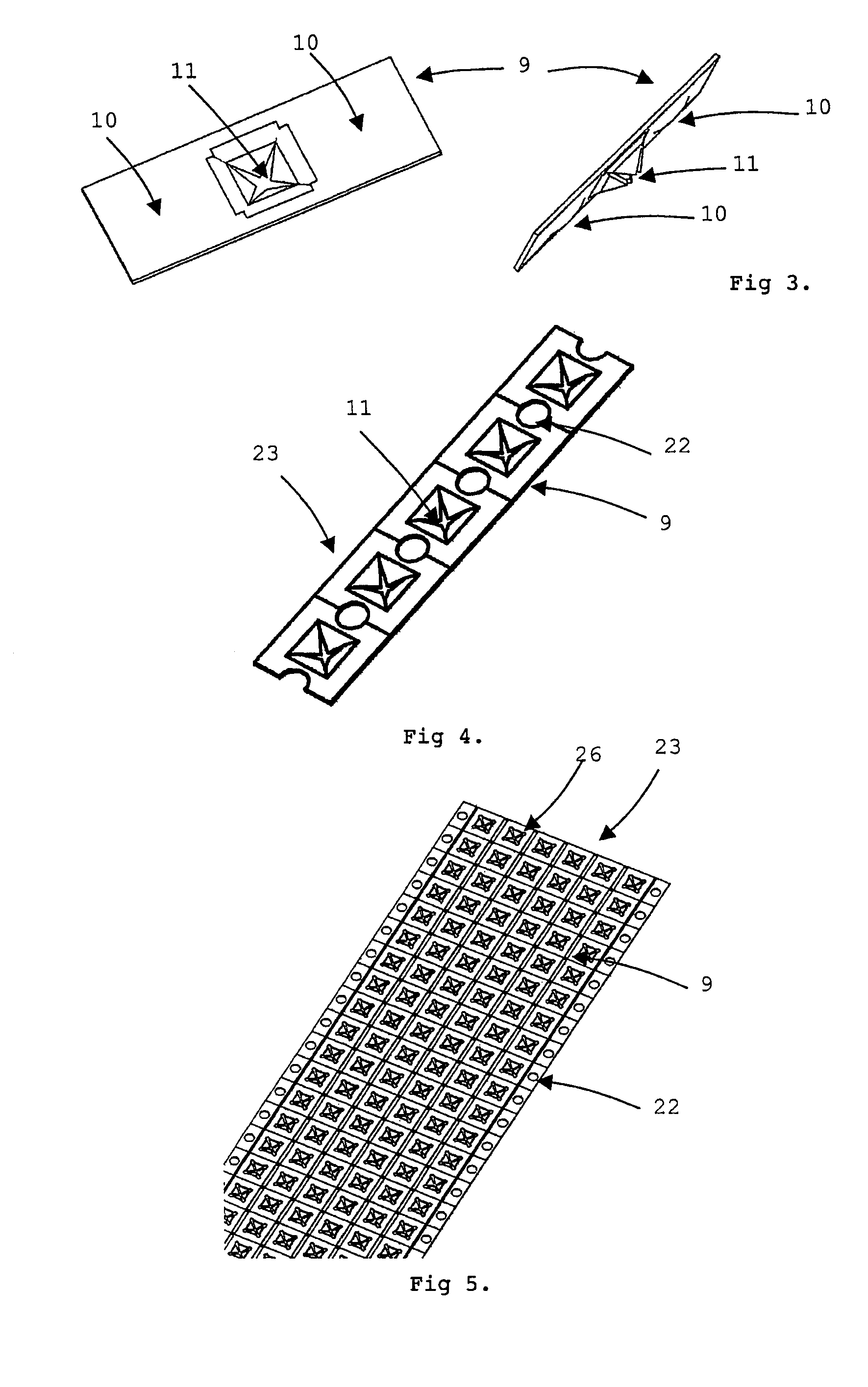Method for connecting an electric actuator to a printed circuit board
a technology of printed circuit board and solderless connection, which is applied in the direction of automatic control devices, measurement/indication equipments, contact member manufacturing, etc., can solve the problems of reducing the melting temperature of tin-based soldering paste, obsolete and dangerous techniques, and the use of soldering pastes. achieve good mechanical support of the actuator, easy to solder on the printed circuit, and high speed
- Summary
- Abstract
- Description
- Claims
- Application Information
AI Technical Summary
Benefits of technology
Problems solved by technology
Method used
Image
Examples
first embodiment
[0052]FIG. 4 shows the metal contacts (9) in a strip (23) in the invention and prior to use. They advantageously comprise, in a non-limiting manner, a cutting zone (22) which allows the cutting tool to handle the strip (23) and move it forward. The electrical contact zone (11) is visible. It can be made by stamping, as shown in FIG. 6, which is to say that the material is lifted in order to form the contact zone (11). It can also be made by shearing, as shown in FIG. 7, which is to say by cutting the material with no loss. The choice of one method or the other will depend on the production imperatives.
second embodiment
[0053]FIG. 5 shows the metal contacts (9) in a strip (23) in the invention and prior to use. In this embodiment, in which several rows (26) are positioned next to one another, it is possible to create cutting zones (22) which can be used by the cutting tool to handle the strip (23) and move it forwards.
[0054]In a preferred embodiment, the metal contact (9) has a substantially square shape, with the side length marked A.
[0055]In both cases, the opening zone defines a diameter D in which the contact zone is capable of folding.
[0056]This metal contact (9) is designed to be placed on a tinned pad or zone (24) of the printed circuit (13), as shown in FIG. 8, which advantageously has a substantially square shape in which the side length is marked as B. When soldering the metal contact using a SMD-type method (by reflow, for example) and in order to guarantee self-centering of the metal contact (9) on the pad (24), as shown in FIG. 9, the side length A must advantageously be comprised betw...
PUM
| Property | Measurement | Unit |
|---|---|---|
| melting temperature | aaaaa | aaaaa |
| melting temperatures | aaaaa | aaaaa |
| thickness | aaaaa | aaaaa |
Abstract
Description
Claims
Application Information
 Login to View More
Login to View More - R&D
- Intellectual Property
- Life Sciences
- Materials
- Tech Scout
- Unparalleled Data Quality
- Higher Quality Content
- 60% Fewer Hallucinations
Browse by: Latest US Patents, China's latest patents, Technical Efficacy Thesaurus, Application Domain, Technology Topic, Popular Technical Reports.
© 2025 PatSnap. All rights reserved.Legal|Privacy policy|Modern Slavery Act Transparency Statement|Sitemap|About US| Contact US: help@patsnap.com



